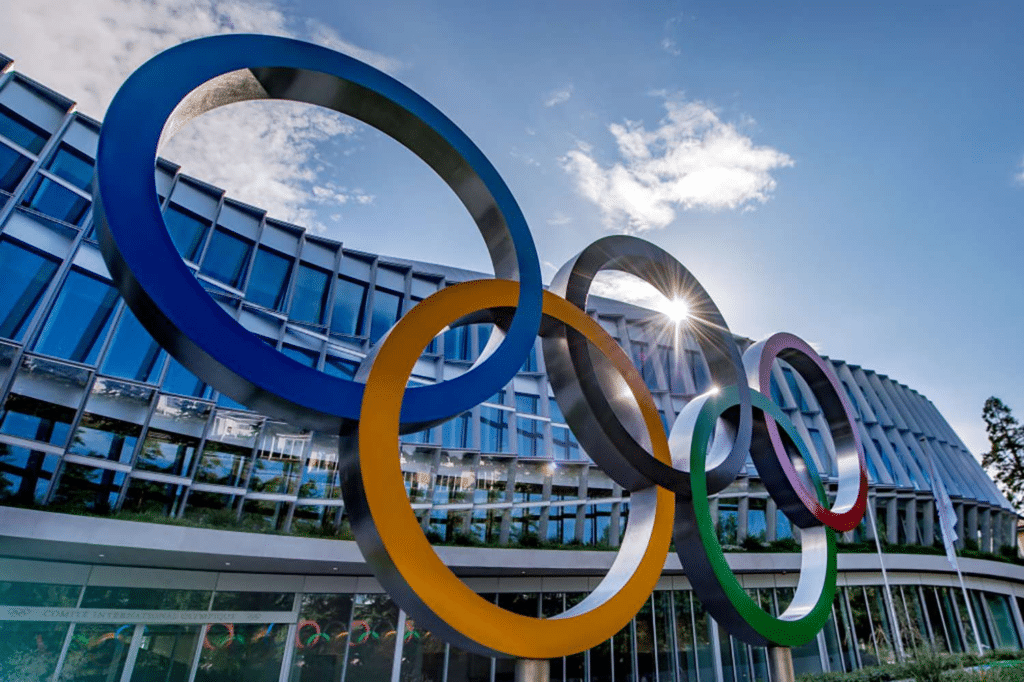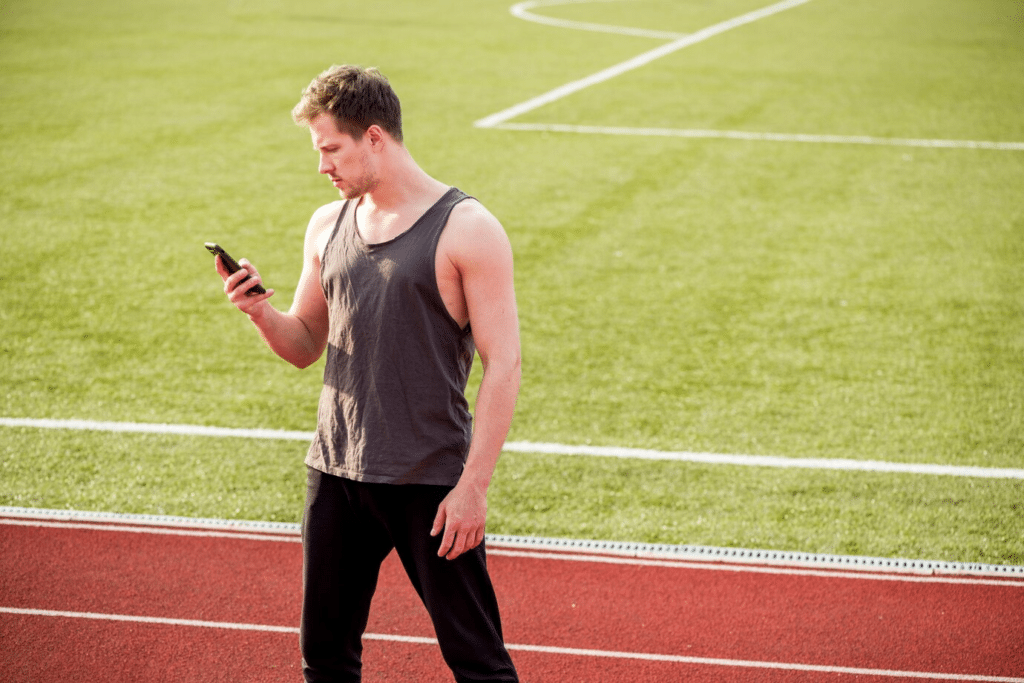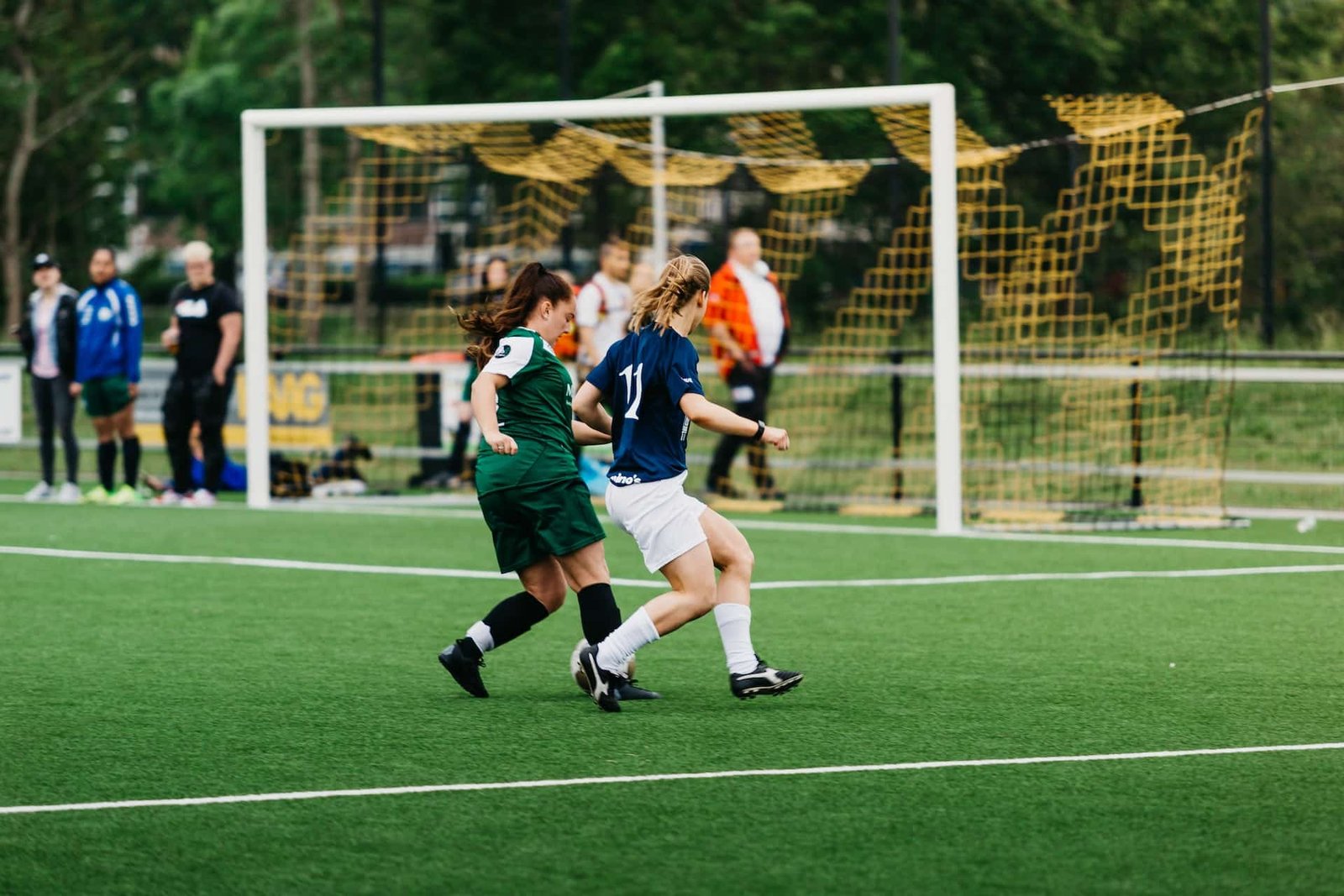University athletics are a key aspect of the college experience, playing a pivotal role in shaping student life and campus culture. The impact of university athletics reaches far beyond the playing field, influencing academic performance, social interaction, campus spirit, and personal development. The sense of community fostered by university sports teams extends to students, faculty, alumni, and even the surrounding community, creating a dynamic and engaged campus atmosphere.
In this article, we will explore how university athletics shape student life and campus culture by examining their influence on various aspects of college life, including academic success, community building, personal growth, school spirit, and the long-term impact on alumni. We will also address frequently asked questions and conclude with key takeaways that emphasize the importance of athletics in shaping a well-rounded college experience.
Key Takeaways
- University athletics create a sense of community and school spirit, bringing together students, faculty, and alumni.
- Participation in athletics promotes personal growth, teaching valuable life skills such as discipline, leadership, and resilience.
- Athletics contribute to academic success by improving time management and providing academic support systems.
- University sports provide physical and mental health benefits, enhancing overall well-being.
- Athletic programs promote diversity and inclusion, helping to break down social barriers on campus.
- University athletics offer career opportunities and networking potential for both athletes and non-athletes alike.
- Alumni engagement in athletics ensures a lasting bond with their alma mater and continued opportunities for current students.
The Role of University Athletics in Building Community and School Spirit
University athletics serve as a focal point for students and the broader campus community. Whether it’s a football game on a crisp fall afternoon, a basketball game during the winter months, or an annual track meet, athletic events bring students, faculty, and alumni together. These events create an opportunity for social interaction, camaraderie, and shared pride in the institution.
For many students, attending games and supporting their university teams is one of the most enjoyable aspects of campus life. The excitement and intensity of university sports foster a sense of unity and belonging. Whether students are athletes themselves or simply fans, the act of supporting the university’s sports teams helps forge a collective identity, often referred to as “school spirit.”
The pride in the university’s athletic achievements becomes a source of campus-wide conversation. Game-day rituals, such as wearing school colors, painting faces, or tailgating, are integral parts of university culture. This sense of belonging is especially important for freshmen, who are adjusting to life away from home and seeking to build social networks.
Athletics as a Tool for Personal Growth and Character Development
Participation in university athletics offers students opportunities for personal growth that extend beyond physical fitness. Being part of a sports team teaches valuable life skills such as teamwork, discipline, time management, leadership, and resilience. These traits are not only important on the field but are also highly transferable to other aspects of student life, including academics, career preparation, and interpersonal relationships.
Student-athletes often develop a strong sense of accountability and responsibility. They must balance their athletic commitments with their academic workload, requiring exceptional time management and organizational skills. In many cases, student-athletes must adhere to strict schedules, which teaches them the importance of discipline and self-regulation.University Athletics and Academic Performance
Athletics and Mental and Physical Health
University athletics contribute to the physical and mental well-being of students. Regular participation in sports promotes physical health by improving cardiovascular fitness, strength, flexibility, and endurance. Exercise also reduces the risk of chronic diseases such as diabetes, heart disease, and obesity.
For student-athletes, physical health is often a top priority. The rigorous training schedules and coaching they receive help them achieve peak physical fitness. Moreover, the physical demands of sports often encourage athletes to follow healthy lifestyles, including proper nutrition and adequate rest.
On the mental health side, university athletics provide a valuable outlet for stress relief. The physical exertion involved in sports helps reduce anxiety and depression while improving mood and overall emotional well-being. Sports also foster a sense of belonging, which can alleviate feelings of isolation or homesickness, particularly among students adjusting to life on campus.
Athletic Programs and Diversity and Inclusion
University athletics play a critical role in promoting diversity and inclusion on campus. Sports teams often bring together students from diverse backgrounds, creating opportunities for cross-cultural interaction and collaboration. Through team sports, students can learn to appreciate different perspectives and develop a more inclusive mindset.
Athletics also provide opportunities for underrepresented groups to shine. For example, women’s sports programs and minority athletes have increasingly been recognized for their contributions to university athletics, helping to break down gender and racial barriers. This inclusivity enriches the university experience for all students, fostering a culture of respect and acceptance.
University athletic programs often prioritize diversity in their recruitment strategies, ensuring that athletes from diverse backgrounds have access to the same opportunities for competition, scholarships, and career advancement.
The Impact of Athletics on Career Opportunities and Networking
University athletics can serve as a stepping stone for future career opportunities. Many student-athletes go on to professional careers in sports, either as players, coaches, or administrators. Even for those who do not pursue a career in sports, the skills developed through athletic participation—such as leadership, teamwork, and communication—are highly valued by employers in nearly every field.
Additionally, athletics offer students an extensive network of contacts that can help them in their professional journey. Whether through alumni connections, coaches, or teammates, student-athletes often have access to a wide range of networking opportunities. Many universities host career fairs and networking events specifically geared toward athletes, which can open doors to internships, mentorships, and job opportunities after graduation.
The Long-Term Impact of University Athletics on Alumni Engagement
University athletics create lasting bonds that extend well beyond graduation. For many alumni, their college sports experience remains a defining part of their identity and connection to their alma mater. Alumni often return to campus for sporting events, offering support and rekindling memories of their time as student-athletes or fans.
Athletic programs also provide a sense of continuity for alumni. When alumni contribute to athletic programs, whether through donations or mentorship, they help ensure that future generations of students can benefit from the same opportunities they had. This continued engagement fosters a strong alumni network, which benefits both current students and graduates by providing access to career advice, job opportunities, and social connections.
Certainly! Here are several detailed topics related to University Athletics that can be explored:
The Economic Impact of University Athletics on Campus and Local Communities

Overview: University athletics are not just about sports; they play a key role in boosting the local economy. This article would analyze how athletic programs contribute to revenue generation through ticket sales, merchandise, sponsorships, and donations. Additionally, it could discuss the broader economic benefits to the local community, including tourism, job creation, and the growth of local businesses.
Key Points:
- Revenue streams from sports events.
- Job creation and career opportunities tied to athletic programs (e.g., coaching, marketing, facility management).
- How major athletic events like bowl games or national championships affect local economies.
- The influence of alumni donations and sponsorship deals.
The Evolution of Women’s Sports in University Athletics
Overview: Explore how women’s sports have evolved in university settings over the years. The article could dive into Title IX legislation, the rise of female athletes, and the development of women’s college teams. It could also look at the growing media coverage, fan support, and how women’s sports are now recognized as a key part of college athletics.
Key Points:
- The history of women’s sports at the collegiate level.
- The impact of Title IX on gender equality in university athletics.
- Current trends in women’s college sports (e.g., scholarships, media representation, and competition).
- Challenges faced by female athletes in college sports and how they are overcoming them.
The Impact of NIL (Name, Image, and Likeness) on University Athletics
Overview: The introduction of NIL rights for student-athletes has reshaped the landscape of college sports. This article would examine how NIL deals are influencing recruitment, athlete compensation, and the broader dynamics of college athletics. It could also analyze how NIL is transforming traditional athletic programs and what this means for student-athletes’ long-term prospects.
Key Points:
- How NIL deals work and their potential benefits for student-athletes.
- The financial impact of NIL on college athletic programs.
- The ethical considerations and challenges of NIL in university athletics.
- How NIL influences recruitment and student-athletes’ college decision-making.
The Role of College Athletics in Shaping Campus Diversity and Inclusion
Overview: University athletics provide an excellent platform for promoting diversity and inclusion on campus. This article would explore how sports teams serve as microcosms of broader society and can help break down barriers of race, ethnicity, and socioeconomic status. It would focus on how athletic programs encourage inclusivity and foster cross-cultural understanding.
Key Points:
- The diversity of student-athletes across different sports.
- How athletic teams promote teamwork and inclusivity across diverse groups.
- The importance of mentorship, coaching diversity, and creating supportive environments.
- The impact of diversity in athletics on campus life and academic performance.
The Mental Health Challenges Faced by Student-Athletes in University Sports
Overview: Student-athletes often face high expectations, intense pressure, and the challenges of balancing academics and athletics. This article would explore the mental health issues that student-athletes encounter, such as anxiety, depression, performance pressure, and burnout. It would also highlight support systems that are in place and how universities are addressing mental health challenges.
Key Points:
- The psychological and emotional toll of being a student-athlete.
- Common mental health issues among student-athletes.
- The role of coaches, athletic trainers, and counselors in supporting mental well-being.
- How universities are developing programs and resources to help student-athletes.
The Influence of Social Media on College Athletes’ Brand and Performance
Overview: With social media platforms like Instagram, Twitter, and TikTok, college athletes now have more visibility than ever before. This article would look at how social media impacts the public perception of athletes, their recruitment prospects, and their personal brand. Additionally, it could delve into the benefits and challenges of using social media as an athlete.
Key Points:
- The role of social media in building a personal brand for athletes.
- The impact of social media on recruitment and media coverage.
- Potential pitfalls, such as online criticism, privacy concerns, and mental health.
- Case studies of college athletes who have successfully leveraged social media.
How University Athletics Foster Alumni Engagement and Lifelong Loyalty
Overview: Alumni engagement through university athletics is a powerful force in maintaining strong connections with former students. This article would explore how universities use athletics to maintain alumni loyalty, attract donations, and keep graduates involved in university life long after they have left campus.
Key Points:
- The role of athletic events in keeping alumni connected to their alma mater.
- The impact of alumni donations tied to athletic programs.
- How universities build long-term engagement through sports events, reunions, and social media.
- Stories of alumni who give back to their athletic programs.
The Ethical Considerations of University Athletic Scholarships and Recruitment
Overview: Athletic recruitment and scholarship programs are crucial in university sports, but they also raise ethical questions about fairness, access, and the role of sports in education. This article would examine the ethical implications of offering scholarships to athletes, the recruitment process, and the potential for exploitation in college sports.
Key Points:
- The pros and cons of offering scholarships to student-athletes.
- How recruitment affects athletes’ decision-making and education.
- Ethical concerns regarding the treatment and compensation of athletes.
- Balancing academic integrity with athletic excellence.
The Role of University Sports in Promoting Sustainability and Environmental Awareness
Overview: University athletic programs have increasingly begun to consider the environmental impact of their events and operations. This article would explore how universities are using sports to promote sustainability, reduce carbon footprints, and engage the student body in environmental initiatives.
Key Points:
- The environmental impact of hosting large-scale athletic events.
- How universities are adopting sustainable practices in sports facilities (e.g., energy-efficient buildings, waste reduction).
- Engaging students in environmental activism through athletics.
- Case studies of universities leading in sustainability efforts.
The Influence of International Student-Athletes on University Sports and Campus Life
Overview: International student-athletes bring diversity to university sports programs, enriching both the athletic experience and campus culture. This article would examine how international athletes contribute to the performance, reputation, and global appeal of university athletics, as well as the challenges they face while adjusting to life in a new country.
Key Points:
- The contribution of international student-athletes to the performance and prestige of college teams.
- Cultural exchange and how international athletes enrich campus diversity.
- The challenges faced by international athletes, including academic pressure and cultural adjustment.
- How universities support international student-athletes in their transition.
The Role of Technology in Enhancing University Athletic Programs

Overview: Technology has revolutionized college athletics, from performance analytics to fan engagement. This article would explore the ways universities are incorporating cutting-edge technology to improve athletic training, recruitment, and fan experiences.
Key Points:
- The role of performance analytics in improving athlete performance and injury prevention.
- Virtual reality and other training technologies used by athletic programs.
- How technology is changing fan engagement (e.g., live streaming, social media, and augmented reality).
- The future of technology in university sports programs.
The Relationship Between College Athletics and University Admissions: A Detailed Analysis
Overview: University athletics and admissions are often linked, particularly when it comes to recruiting high-performing athletes. This article would delve into how athletic recruitment works, the advantages and challenges of being recruited for sports, and the ways university admissions departments collaborate with athletic programs.
Key Points:
- The role of athletics in the college admissions process.
- How student-athletes are evaluated differently than non-athletes during admissions.
- The benefits and potential drawbacks of being recruited for sports.
- Policies and fairness in recruiting athletes for top-tier programs.
Each of these topics offers a deep dive into specific aspects of university athletics, providing ample opportunities for research, analysis, and discussion. Whether focusing on the economic, cultural, or ethical implications of college sports, these articles can help illuminate the vast influence athletics have on university life and the broader community.
The Impact of University Sports on Student Retention Rates
Overview: University athletics can play a significant role in student retention. This article would explore how involvement in sports, whether as an athlete or a fan, influences a student’s decision to stay at a particular university. It would examine how sports create a sense of community, help students build connections, and provide personal growth opportunities, all of which can lead to higher retention rates.
Key Points:
- The role of sports in creating a sense of belonging and community.
- How athletic programs impact student satisfaction and engagement.
- Studies or statistics showing a correlation between sports involvement and retention rates.
- The importance of student-athlete engagement and support systems in retaining students.
The Ethics of Commercializing College Sports: A Double-Edged Sword
Overview: College sports have become a multi-billion-dollar industry, and with that comes numerous ethical considerations. This article would analyze the commercialization of college athletics, including sponsorships, media rights, ticket sales, and merchandise. It would also discuss how this commercialization impacts student-athletes, academic integrity, and the university’s educational mission.
Key Points:
- The growing revenue streams from college sports.
- The ethics of profiting from student-athletes, particularly in terms of NIL rights.
- How commercialization affects the academic and personal lives of student-athletes.
- The balance between sports as entertainment and athletics as part of the educational experience.
The Role of College Sports in Promoting Social Justice and Advocacy
Overview: This topic would explore how university athletics can serve as a platform for social change and advocacy. University athletes, especially at the professional level, have historically been at the forefront of political and social movements. This article would examine the role of student-athletes in promoting social justice, supporting causes, and using their platform to speak out against inequality.
Key Points:
- Examples of student-athletes using their platform for activism.
- How athletic programs support social justice initiatives.
- The impact of protests, movements, and advocacy on campus culture.
- The responsibility of universities to support student-athletes’ efforts for social change.
The Evolution of College Sports Broadcasting and Media Rights

Overview: With advancements in technology, college sports broadcasting has undergone significant changes in recent years. This article would explore how university athletics programs have adapted to the digital age, how media rights and broadcasting deals are negotiated, and how the exposure of college sports on national and international platforms impacts both the athletes and the universities.
Key Points:
- The evolution of broadcasting college sports (from local to national platforms).
- The financial implications of media rights deals for universities and athletic programs.
- The shift to digital platforms, streaming services, and social media coverage.
- How the increased exposure affects recruitment, fan engagement, and alumni relations.
The Influence of College Sports on Local and National Identity
Overview: University athletics have long been intertwined with regional and national identities. This article would discuss how college sports, especially major programs like football and basketball, contribute to a region’s or even a nation’s identity. It would analyze how teams become symbols of pride and how athletic success can boost local morale and bring communities together.
Key Points:
- The regional or national pride tied to university sports teams.
- The influence of iconic teams (e.g., University of Alabama football or University of North Carolina basketball).
- How sports success can elevate a university’s and local community’s reputation.
- The role of college athletics in fostering a sense of community on and off-campus.
The Mental and Physical Toll of College Sports: A Look at Injuries and Recovery
Overview: Student-athletes face intense physical demands, and the risks of injury are inherent in most college sports. This article would explore the physical and mental toll of college athletics on student-athletes, including common injuries, recovery programs, and the mental health challenges associated with injuries.
Key Points:
- Common injuries among student-athletes and the challenges of rehabilitation.
- The impact of injuries on academic performance and social life.
- Psychological effects of injuries, including anxiety, depression, and fear of re-injury.
- How universities and athletic programs support injured athletes through recovery and mental health services.
Read Also :- https://getuniversity.store/what-are-the-benefits-of-joining-a-sports-club-in-university/
Conclusion
University athletics shape student life and campus culture in profound ways. From building community and school spirit to enhancing personal growth and academic performance, athletics offer students a holistic college experience. The bonds forged through team sports, the life skills learned, and the health benefits gained extend far beyond graduation, influencing students’ futures both personally and professionally.
By supporting university athletics, institutions provide students with opportunities for leadership, teamwork, and academic achievement while fostering a campus culture of inclusivity, pride, and engagement. Ultimately, university athletics help create an environment where students can thrive, grow, and forge lasting memories that will stay with them long after they leave campus.
FAQs
How do university athletics impact non-athletes? Non-athletes benefit from university athletics by experiencing school spirit, attending events, and building a sense of community. Even if not directly involved in sports, non-athletes are part of a vibrant, energetic campus atmosphere that athletics help create.
Do athletics help with college admissions? Athletic participation can play a role in college admissions, especially for students who excel in high school sports. Athletic scholarships can make a student more competitive in the admissions process.
How can student-athletes balance academics and athletics? Student-athletes balance their time through careful planning, support from academic advisors, and often, structured schedules set by their coaches and athletic departments.
What are the benefits of playing a sport in college? The benefits of playing a sport in college include improved physical health, personal growth, networking opportunities, and a sense of community and school spirit.
Are student-athletes more likely to graduate than non-athletes? Studies show that student-athletes are more likely to graduate than their non-athletic peers, largely due to the structured nature of their academic support systems.
How does athletics promote diversity on campus? Athletics bring together students from diverse backgrounds, fostering an environment of inclusion and helping break down cultural and racial barriers.
Can athletics help with career prospects? Yes, athletic participation can open doors to career opportunities by helping students build leadership skills, expand their networks, and gain exposure through sports media or alumni connections.
By recognizing and supporting the significant role of athletics in university life, colleges and universities can continue to foster environments that encourage academic achievement, personal development, and community engagement.





